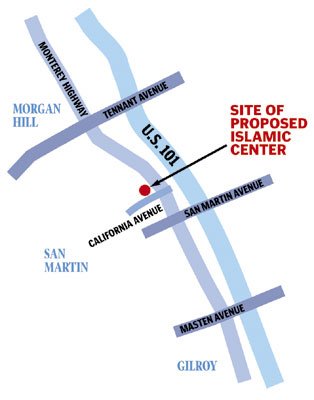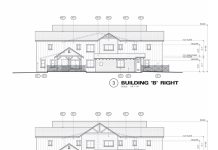Gilroy
– A growing Islamic organization hopes to build a mosque, school
and interfaith community center on a hilltop just south of Morgan
Hill.
Gilroy – A growing Islamic organization hopes to build a mosque, school and interfaith community center on a hilltop just south of Morgan Hill.
Silicon Valley Islamic Center, now based in Morgan Hill, is in the earliest stages of planning its future Cordoba Center for Muslim Community and Religious Affairs. After five years of searching for a permanent home, the organization this month plans to submit initial designs to county planners for a facility at 14065 Monterey Road, in San Martin.
“We have a very fast-growing Muslim community in this area, with a lot of them moving from Silicon Valley,” said Sal Akhter, a local developer and president of the organization’s board of directors. “We definitely needed something like this. We just never had a critical mass like this until now.”
The Islamic center, founded in 1999, has about 75 families registered as members, but Akhter believes the project will help attract many more of the estimated 300 Muslim families between Hollister and Morgan Hill. A grand vision for the 16-acre site in San Martin includes an auditorium and conference center, convalescent home and funeral facility, though the initial phase of the project is expected to be far more modest, Akhter said.
The Cordoba Center draws its inspiration from the ancient Spanish city of Cordoba, the capital of the Muslim Caliphate and the center of the Islamic empire a thousand years ago.
“That was one of the crown jewels of Europe,” Akhter said. “The society there was a (mixed) Christian-Muslim-Jewish Society. It was ruled by the Moors, but there was no one dominant class. Science and culture flourished in that time in all three religions and faiths. (Our center) pulls you back to a time where the three faiths built upon their commonalties.”
To that end, Silicon Valley Islamic Center is reaching out to Christian and Jewish organizations in the area in hopes of forging a partnership. Akhter declined to name any organizations, saying it was too early in the process and the nature of the collaboration has not been determined. Partnerships could range from joint use of the community center to subdividing the land in three parcels and making space for a church and synagogue.
The Rev. Malcolm MacPhail of Gilroy’s New Hope Community Church said he would approach such a partnership cautiously, citing theological differences and potential backlash from parishioners. A religion’s worth is measured by its good works, MacPhail said, suggesting he remains skeptical of a faith that can produce “evil” such as the Sept. 11 terrorist attacks.
“We can be collaborative,” MacPhail said, however, “in meeting the needs of the communities – the hurting, the homeless, the downtrodden and the disabled. We need to be in unity on those areas.”
Akhter responded that “We’re obviously not going to find collaborators in every corner. We just have to find the people who are open-minded enough to look beyond the differences and who are willing to create a more tolerant society.”
The organization is in escrow on the land, but expects to pay it off by next spring. Akhter predicted the first phase of the project would cost $6 million, though it could reach $35 million with the addition of the auditorium, convalescent home and other facilities. He expects the county regulatory process for the mosque, school and community center to take about a year.













